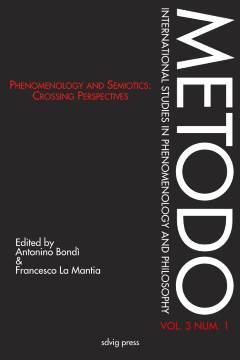Phenomenology meets semiotics
Two not so very strange bedfellows at the end of their cinderella sleep
pp. 41-62
Abstract
Semiotics is generally conceived as being opposed to phenomenology, but such an opposition can only result from taking too much for granted, about both phenomenology and semiotics. While recognising that semiotics and phenomenology are historically different traditions, the present essay suggests that these traditions have a lot in common and that their very differences may give rise to fruitful phenomenological explorations. In the first part, we look at the similarities between Husserlean and Peircean phenomenology, and then proceed to consider the different approaches of these two scholars to the nature of propositions, where the discoveries of one can be used to rectify the neglect of the other. In the second part, we ponder Derrida’s critique of phenomenology, considered as an out-growth of structuralist semiotics, showing that, while Derrida’s remarks are pertinent, they miss the real issue. In so doing, we first scrutinize the Husserlean notion of sign, as understood by Derrida, as opposed to how it emerges from Husserl’s total work, and then we embark on the grander issue of presence, which, to Husserl, is never really divorced from absence.
Publication details
Published in:
Bondì Antonino, La Mantia Francesco (2015) Phenomenology and semiotics. Metodo 3 (1).
Pages: 41-62
Full citation:
Sonesson Göran (2015) „Phenomenology meets semiotics: Two not so very strange bedfellows at the end of their cinderella sleep“. Metodo 3 (1), 41–62.


